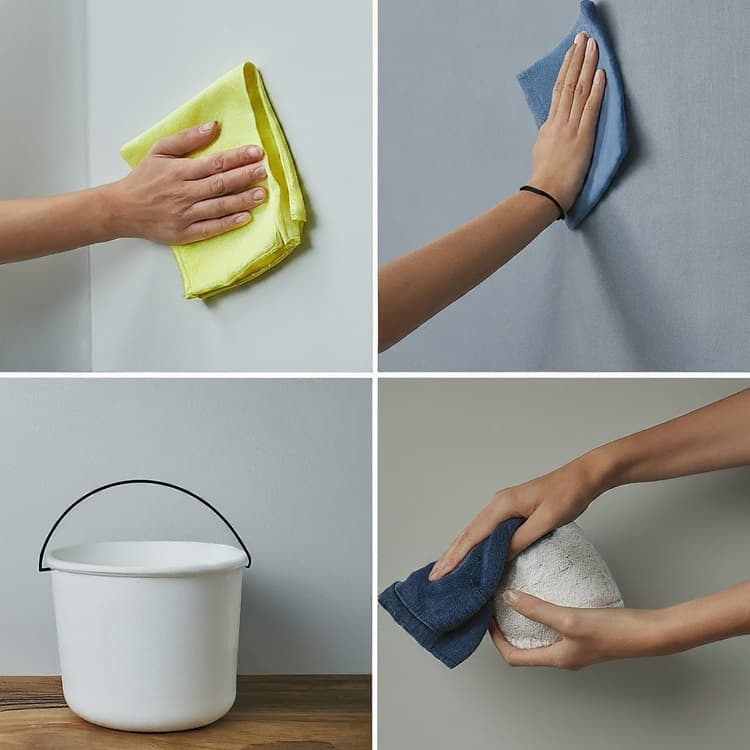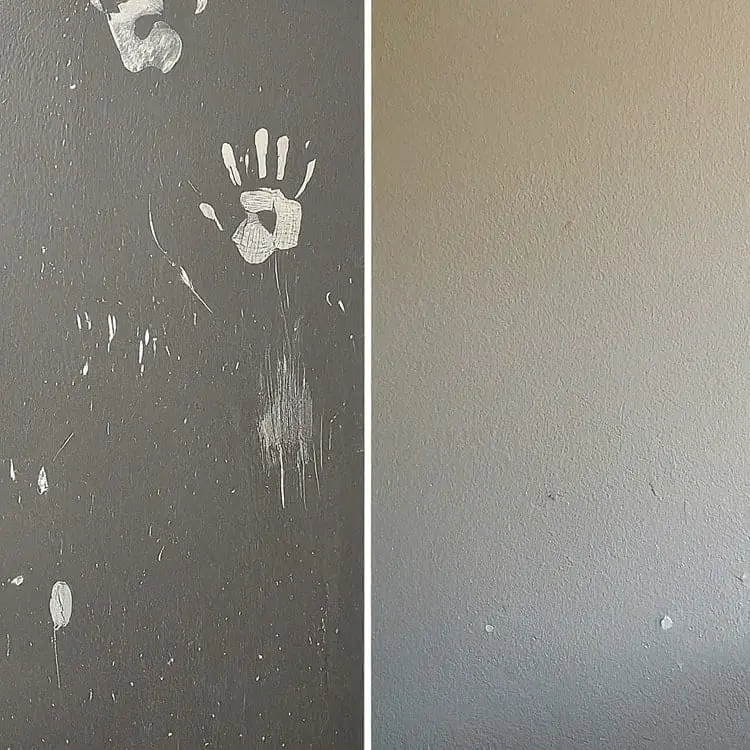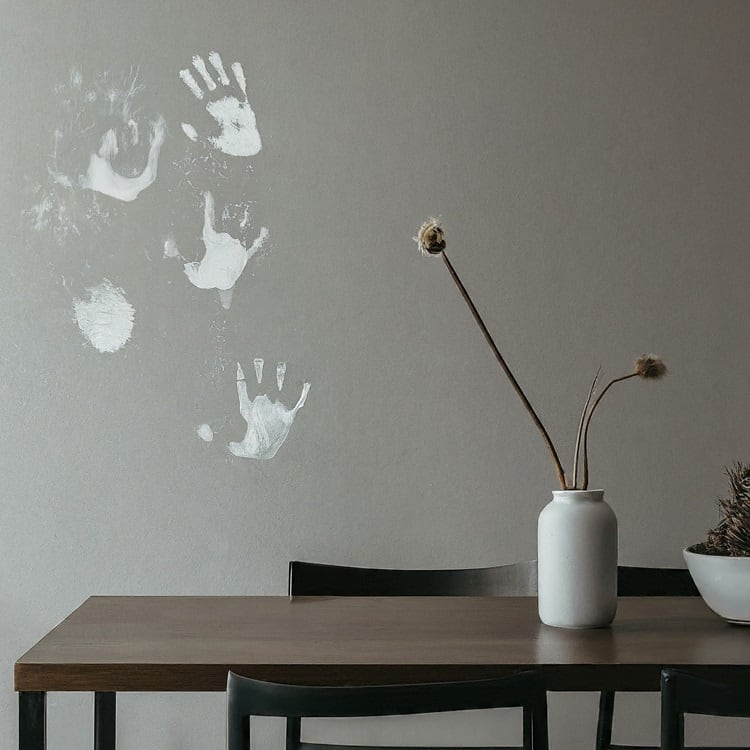Paint can give your walls a beautiful, smooth finish, but cleaning requires special care to maintain its delicate appearance. In this article, I’ll explore how to clean flat walls without removing paint and offer expert tips and techniques to keep your walls looking fresh without causing any damage.
Flat paint, also known as latex paint with a matte finish, is known for its smooth, non-reflective finish but is more prone to damage from harsh cleaning methods.
Unlike semi-gloss or satin finishes, flat paint lacks the protective sheen that can withstand scrubbing. Therefore, it’s essential to use gentle cleaning techniques to avoid ruining the finish.
Warm water is your best friend when it comes to cleaning flat paint. Dampen a microfiber cloth with warm water and gently wipe down the walls to remove bare dirt and smudges. Avoid using too much water, as excessive moisture can damage the paint.
For tougher stains, create a gentle cleaning solution using mild dish soap or castile soap. Mix a small amount of soap with warm water in a bucket, making sure to dilute the solution properly. Dip your microfiber cloth into the soapy water and gently scrub the stained areas; however, be careful not to rub too hard.
How to Clean Flat Walls Without Removing Paint: A Simple Guide

1. Dust Your Walls
- Prepare the area: Clear the space around the walls, removing furniture or objects that may obstruct your cleaning process.
- Start from top to bottom: Begin at the top of the wall and work your way down. This prevents dust and debris from falling onto already clean areas.
- Use a vacuum cleaner with a brush attachment: If it has a brush attachment, attach it and set the suction to a low or medium setting. Starting at the top corner of the wall, gently brush the surface in long, vertical strokes. Move across the wall, overlapping each stroke slightly. Pay attention to corners, edges, and moldings.
- Use a soft-bristle brush: If you don’t have a vacuum cleaner with a brush attachment, use a soft-bristle brush instead. Make sure the brush is clean and free from any debris. Using the same technique as the vacuum cleaner, sweep the brush across the wall in long, vertical strokes, overlapping each stroke slightly.
- Clean the brush or vacuum cleaner attachment: As you clean, dust and debris will accumulate on the brush or attachment. Take breaks to clean them periodically, either by tapping them against a hard surface or using a separate brush to remove the buildup.
- Check for missed spots: Once dry dusting the entire wall, step back and inspect the surface for any missed areas. Use the brush or vacuum cleaner attachment to touch up these spots.
2. Mix Your DIY Wall Cleaner
Creating your wall cleaner is both cost-effective and effective! You’ll need:
Ingredients:
-
- Warm water
- Liquid dish soap (or white vinegar if you prefer a natural option)
Instructions:
-
- Fill a bucket with warm water.
- Add a few squirts of liquid dish soap (or ¼ to ½ cup of white vinegar).
- Mix well.
3. Wash Your Walls with Care
Materials Needed: Clean sponge, bucket with the soapy water mix, and a separate bucket with clean water.
Steps:
-
- Dip the sponge into the soapy water, wring it out, and start cleaning your walls section by section.
- Work from top to bottom to avoid streaks.
- Rinse the sponge as needed.
- Use a little elbow grease for stubborn spots, but be gentle.
- Follow up with a sponge dipped in clean water to remove any residue.
4. Be Mindful of High-Traffic Areas
Door jambs, light switches, and corners near furniture tend to accumulate more dirt. When cleaning these areas, use a lighter touch to avoid accidentally removing paint.
How to Clean Flat Walls Without Removing Paint for Stubborn marks and scuffs
While soap and water are often sufficient for everyday wall cleaning, occasionally, you might encounter a stubborn mark that requires a more targeted approach.
Here are a few effective methods to tackle those persistent scuffs and stains:
1. The Magic Touch of a Magic Eraser (Use with Caution):
Magic erasers can be lifesavers for various cleaning tasks, and walls are no exception.
- Simply dampen your magic eraser and gently rub it over the scuff mark in a circular motion.
- Remember, a light touch is essential! Test the eraser in an inconspicuous area first to ensure it doesn’t damage the paint.
2. Baking Soda and Vinegar: A Natural Powerhouse:
This eco-friendly duo can tackle a surprising number of cleaning challenges. In a small bowl, create a thick paste by combining baking soda and vinegar.
- Apply the paste to the mark with a clean cloth and let it sit for a minute or two.
- Gently wipe away the paste with a fresh, damp cloth.
- This method is perfect for removing light to moderate stains without harsh chemicals.
3. Rubbing Alcohol: A Powerful Option (But Proceed with Care):
While effective at removing marks, rubbing alcohol can damage your paint if not used cautiously. Therefore, it should be a last resort.
- Wet a clean cloth with a tiny amount of rubbing alcohol and test it in an inconspicuous area first.
- If no adverse effects occur, apply the alcohol to the mark gently and circularly.
- Once the mark is gone, immediately clean and dry the area with a damp cloth to remove residual alcohol.
However, if your walls are heavily soiled and cleaning doesn’t yield satisfactory results, it may be time to consider repainting.
While repainting is more significant, it can breathe new life into your walls and provide a fresh start.
Read More How To Paint A Room For Beginners
How To Keep Your Painted Walls Looking Their Best

1. Prevention is Key
- Choose the Right Paint: Using paint with a stain-resistant finish is advisable, especially in high-traffic areas like kitchens and bathrooms.
- Mind Your Décor: Strategically place furniture and artwork to minimize the chance of scuffs and scratches.
2. Regular Dusting
- Embrace the Microfiber: Regularly dust your walls with a microfiber cloth to trap dust particles before they build up and dull the paint’s finish.
- Top-to-Bottom Approach: Start dusting at the top of the walls and work your way down to avoid spreading dust on already cleaned areas.
3. Targeted Cleaning
- Choose your appropriate method: Depending on the paint finish (flat, eggshell, satin, etc.), choose the appropriate cleaning method. Harsh chemicals or abrasive sponges are a big no-no!
- The Power of Water: Often, warm water is enough to remove light dirt and smudges from most paints.
- Gentle Solutions for Stubborn Stains: Create a mild cleaning solution with a few drops of dish soap or castile soap in a bucket of warm water for tougher marks. Remember to dilute well and test on an inconspicuous area first.
- Natural Powerhouses: Baking soda paste can be a gentle yet effective solution for some stains.
- Magic Erasers (Use with Caution!): While magic erasers can be tempting for stubborn scuffs, use them with extreme caution on painted walls. Always test in a hidden spot first, and use minimal pressure with short strokes to avoid damaging the paint.
4. Washing Techniques:
- Focus on high-traffic areas: Kitchens and bathrooms are prone to grease and moisture buildup and might require a more thorough cleaning two to three times a year.
- Work in Sections: Wash walls in sections, rinse your cleaning solution frequently, and use a clean, damp cloth for the final wipe to avoid streaks.
5. Proactive Maintenance
- Touch-Up Quickly: Address minor nicks or scratches promptly with touch-up paint to prevent them from becoming bigger problems.
- Sunlight Savvy: Minimize prolonged exposure of painted walls to direct sunlight, as UV rays can cause fading over time. Consider using curtains, blinds, or UV window films for protection.
Read More Tips On Cleaning House Cleaning Secrets Step
Take away on How to Clean Flat Walls Without Removing Paint.
Cleaning flat walls without removing the paint is a task that requires a delicate touch and the proper techniques.
Dry dusting the walls and using mild warm water and dish soap cleaning solution will help remove bare dirt and smudges. A paste made of baking soda and water can be used for tougher stains, but always test it in an inconspicuous area first.
Remember to promptly address grease and oil stains with a small amount of mild dish soap. Rinse the walls thoroughly with plain warm water and dry them completely to avoid watermarks or streaks.
Preventative measures, such as avoiding touching the walls with dirty hands and addressing stains promptly, will help maintain the cleanliness of your flat walls in the long run.
Always prioritize the preservation of the paint by using a gentle touch, avoiding harsh chemicals or abrasive cleaners, and testing any cleaning solution or method in an inconspicuous area.
Do you have any unique cleaning tips for flat walls? Share your experiences and ask questions in the comments below. Let’s keep the conversation flowing and our walls sparkling clean!

